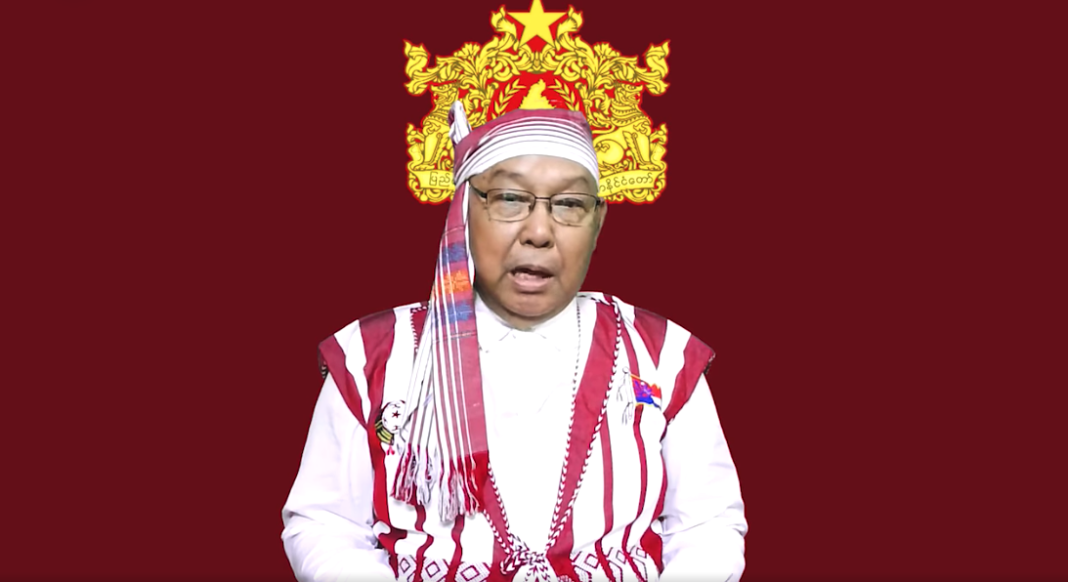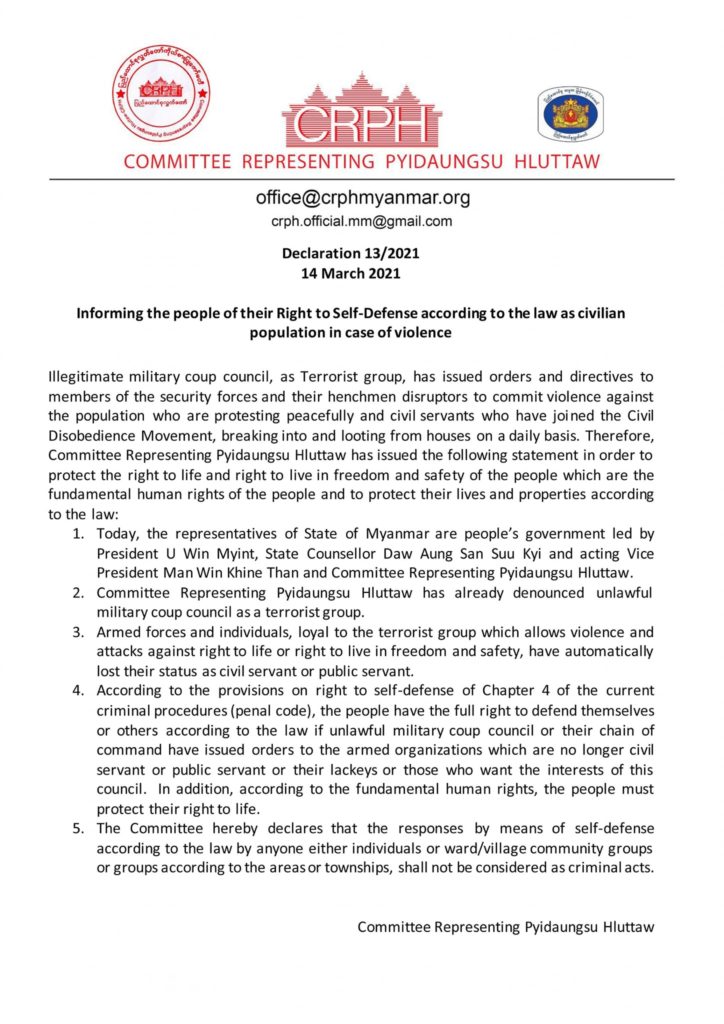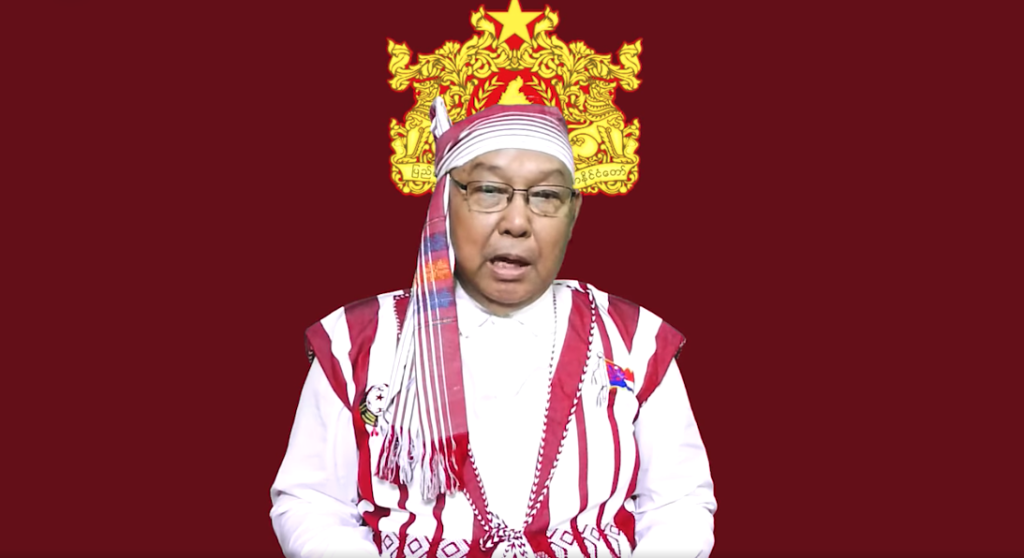It isn’t easy to pinpoint core issues in the midst of the coup-maker junta’s merciless crackdown on the public demonstrating against its illegal rule, where some 140 have been killed and over 2000 in detention, plus townships in Yangon declared martial law, to be able to control the situation.
As of March 15, a total of (2175) people have been arrested, charged or sentenced in relation to the attempted military coup on February 1. Of them, (3) were convicted; (2) to two years imprisonment, (1) to three months. (73) have been charged with a warrant and are evading arrest, (319) were released. A total of (1856) are still under detention or have outstanding charges/evading arrest, including the (3) sentenced, according to the Assistance Association for Political Prisoners (AAPP).
On March 13, the much awaited state of nation speech of Acting Vice-President Mahn Win Khaing Than, the former House of Nationalities or Ahmyotha Hluttaw speaker, was made public on the Facebook of Committee Representing Pyidaungsu Hluttaw (CRPH), which is Assembly of the Union made up of House of Representatives and House of Nationalities.
He said that despite differences now is the time for all stakeholders to hold hands and end the dictatorship for good.
“Beloved and respected brothers, sisters and all citizens now is the darkest hours of our country and as well a dawning moment (of freedom) is nearing. This is a testing time for our people on how much endurance we have (to withstand the pressure),” he said.
In his speech he earnestly promised saying: “In order to establish federal democratic union, hand-in-hand cooperation with all concerned organizations, individuals and abolition of 2008 constitution to (pave way for) the emergence of federal democratic Constitution will utmostly be tried to implement.”
Regarding the indiscriminate, merciless crackdown of the protesters by the junta he said: “In order for the people to employ self-defense (with clear conscience) CRPH will try to draft and promulgate (necessary) law. Concerning civil administration issues implementation through transitional civil administration organizations will be made.”
On March 14, five-point CRPH Declaration 13/2021 outlined its position regarding the issue of self-defense, which said that it is the people’s government; has already denounced the unlawful military coup council as a terrorist group; armed forces and individuals, loyal to the terrorist group have lost their status as civil servants; according to the provisions on rights of self-defense of Chapter 4 criminal procedures the people have the full right to defend themselves; and it declared that the responses by means of self-defense according to the law by anyone either individuals or ward/village community groups or groups according to the areas or townships, shall not be considered as criminal acts.
On the same day, in what now is fast becoming to be known as “Black Sunday”, some 70 civilians protesting against the military coup were slaughtered by the junta’s police and military forces in and around Yangon, which happened in Hlaing Thar Yar, Thingangyun, South Okkalapa, North Dagon, Kyeemyindaing, Tamwe, North Okkalapa, South Dagon, Shwe Pyi Thar, and Insein townships.
Recent Facebook footage showed there that there were resistance by the protesters, with sling shots, Molotov cocktail bombs, knives and so on, unlike in the past where they were mere sitting ducks. It may well be due to the CRPH announcement position of self-defense and that retaliation is in order and not considered criminal.
On March 14 and 15, the junta declared martial law in Yangon townships of Hlaing Thar Yar and neighboring Shwepyitha, followed by North Dagon, South Dagon, Dagon Seikkan and North Okkalapa.
Federal Constitution
According to Zin Mar Aung the acting foreign minister, in order to form a national unity government an all accepted federal constitution is utmost necessary.
The ethnic political parties (EPPs) and ethnic armed organizations (EAOs) all have been demanding that the 2008 military-drafted Constitution be abolished and federal Constitution speedily adopted.
So far The Constitution of Federal Republic of the Union of Burma (Second Draft), drafted by Federal Constitution Drafting and Coordinating Committee, adopted on 12 February 2008, seems to be the only available one, although Zin Mar Aung said there are others also which have to be taken into consideration.
In this conjuncture let us look at the federal constitution’s Article 49, which writes:
Member States of the Federal Union and Federal Territories
(A) The Member States of the Federal Union:
The National States and Nationalities States are;
- Kachin National State
- Karen National State
- Karenni National State
- Chin National State
- Bama National State
- Mon National State
- Tennasarim Nationalities State
- Arakan National State
- Shan National State
- Irrawaddy Nationalities State
- …….
- …….
But in order to understand why the 2008 federal constitution was drafted that way can be traced to Federal Amendment Proposal of 1961, drafted by all ethnic nationalities, in Taunggyi, Shan State.
To amend the 1947 constitution, a key part of the federal proposal reads:
The provisions for equal rights and opportunities between the various states and nationalities are not adequately prescribed in the present Constitution of the Union of Burma.
The Steering Committee has therefore unanimously decided that to ensure equal rights and opportunities for all, the Constitution should be revised in accordance with the principles of a truly federal constitution.
The Steering Committee hereby resolves that in redrafting the Constitution, in accordance with genuine federal principles, the following basic requirements for ensuring equality shall be included:
- Establishment of a Burmese State;
- Assignment of equal powers to both Chambers of the Union Parliament;
- Each State to be represented by an equal number of representatives in the Chamber of Nationalities;
- The following Departments shall be vested in the Central Union, while all other powers, rights and entitlements shall be transferred to the states.
(a) Foreign Affairs;
(b) Union Defense;
(c) Union Finance;
(d) Coinage and Currency;
(e) Posts and Telegraphs;
(f) Railways, Airways and Waterways;
(g) Union Judiciary;
(h) Collection of Custom duties at Seaports. - Union revenue to be distributed equitably.
Of the five basic requirements, the first needs a little more clarification: the creation of a Burmese or Bamar State. The All States Unity Organization’s document on the Federal Amendment Proposal, which was presented to U Nu in January 1962 by ethnic leaders prior to a forthcoming national conference, noted that the 1947 constitution had a fundamental problem. Prior to independence, “Burma Proper” was one element in a diarchic system of government under colonial government whereby parliamentary home rule was introduced among the Bamar majority in what became known as “Ministerial Burma”, while the non-Bamar peoples of the Frontier Areas were largely left under their traditional leaders and rulers. It was only at independence in 1948 that the two territories were constitutionally combined. However, instead of the administration of Burma Proper having a separate state government for itself, under the 1947 constitution it had come to serve as the central government as well. This meant not only a usurpation of the central powers of the government by Bamar-majority politicians in the former Burma Proper but also that the political rights of the non-Bamar territories and peoples were mostly denied.
(Source: “Jump-starting the stalled peace process,” by Sai Wansai, published by Transnational Institute, 4 May 2017.)
CRPH’s notion of self-defense
Regarding self-defense and the people’s right to defend themselves from the law point of view many are at a loss on how the CRPH will be able to chip in without enforceable mechanism available.
The inputs on the Facebook concerning the Declaration of CRPH vary from asking directive, arms, demanding formation of a federal army, appointing minister of defense, speeding up alliance with the EAOs, to staging guerrilla warfare.
On the ground, the call for self-defense has been ringing for sometimes even before the declaration. But after that, there were visible increased militant resistance in many protest areas around Yangon in small groups which are yet to be systematically organized.
And as the Responsibility to Protect (R2P) humanitarian intervention evaporated, with China and Russia wielding veto as permanent members of the UNSC, only coalition of the willing is left as an option like in the case of Iraq invasion headed by the US. But this available option is also a non-starter as US priority on Burma is incomparable to Iraq and besides, its Secretary of State Antony Blinken said his country won’t get involve in costly foreign intervention.
In his speech on March 3, He said: “We will not promote democracy through costly military interventions or by attempting to overthrow authoritarian regimes by force. We have tried these tactics in the past. However well intentioned, they haven’t worked.”
Thus, there have been increasing calls for material helps and know-how to conduct self-defense by the exiled community from Burma in various countries.
The most likelihood will be alliance with the EAOs but the situation on the ground isn’t that clear, as in the first place they are roughly categorized into northern and southern groups.
The northern political alliance of Federal Political Negotiation and Consultative Committee (FPNCC), includes the United Wa State Army (UWSA), National Democratic Alliance Army (NDAA), Shan State Progressive Party (SSPP), Kachin Independence Army (KIA), Ta’ang National Liberation Army (TNLA), Myanmar National Democratic Alliance Army (MNDAA) and Arakan Army (AA).
Besides, there is a military alliance called National Alliance – Burma (NA-B), of which the KIA, TNLA, MNDAA and AA are involved.
The complication is that while the TNLA and KIA showed sympathy to the anti-coup movement as a whole, with the latter opening up war front in Kachin State overrunning the military or Tatmadaw’s outposts killing scores of them, the former marched to the town of Lashio, in northern Shan State very recently to show support for the protesters against the military coup and the junta.
And to make the matter more complicated, the AA which is on unofficial ceasefire term for more than four months with the Tatmadaw has even been taken out from terrorist group designation by the junta quite recently.
The southern group which is nationwide ceasefire-Signatory-ethnic armed organizations (NCA-S-EAOs) comprised of the All Burma Students’ Democratic Front (ABSDF), Arakan Liberation Party (ALP), Chin National Front (CNF), Democratic Karen Benevolent Army (DKBA), Karen National Union (KNU), KNU/Karen National Liberation Army Peace Council (KNU/KNLA PC), Pa-O National Liberation Organization (PNLO), Restoration Council of Shan State (RCSS), New Mon State Party (NMSP), and Lahu Democratic Union (LDU).
Although KNU and RCSS, the most strongest in the group are sympathetic and gave shelter to the fleeing individuals from junta’s persecution, due to participation in the civil disobedience movement (CDM), they stopped short of wholly endorsing the CRPH. However, both have been in constant touch with the CRPH, pending any official alliance, most likely as the adoption of the federal constitution is not yet in place.
Analysis
The first issue of national unity government and the probable alliance with the EAOs from the south is at the moment an open question, while the northern FPNCC as a whole is not in the pipeline, according to the available sources. It will however depend on the CRPH political vision and how much it can accommodate the aspirations of the ethnic nationalities regarding the political future of the country and how core problem of constitutional crisis will be resolved.
As for the issue of self-defense, it will hinge on if the national unity government can be formed, which will include the EAOs. This will enable the CRPH to spread its influence on the ground to include ethnic states as a government as the EAOs have sizable areas of control and will be able to support its claim of legitimacy in a true practical sense, including the support of the movement in Bamar heartland, in enforcing and implementing self-defense for its people.
Meanwhile, the junta is out to crush the anti-coup movement using martial law and would come down brutally to achieve its aim.
For now, it is hard to imagine on how the country’s situation will develop further, with China sucking into the quagmire between the public and the junta, as Chinese industries were said to be attacked by the protesters, which they denied as being framed by the junta to give reason to crackdown on them.
Unconfirmed news said that the junta has targeted March 27 to be able to crush the people’s movement and regain control. But whether it will achieve its goal or not for the time being is an open question, as the people are determined to struggle for a long haul to put an end to the military dictatorship, once and for all.






